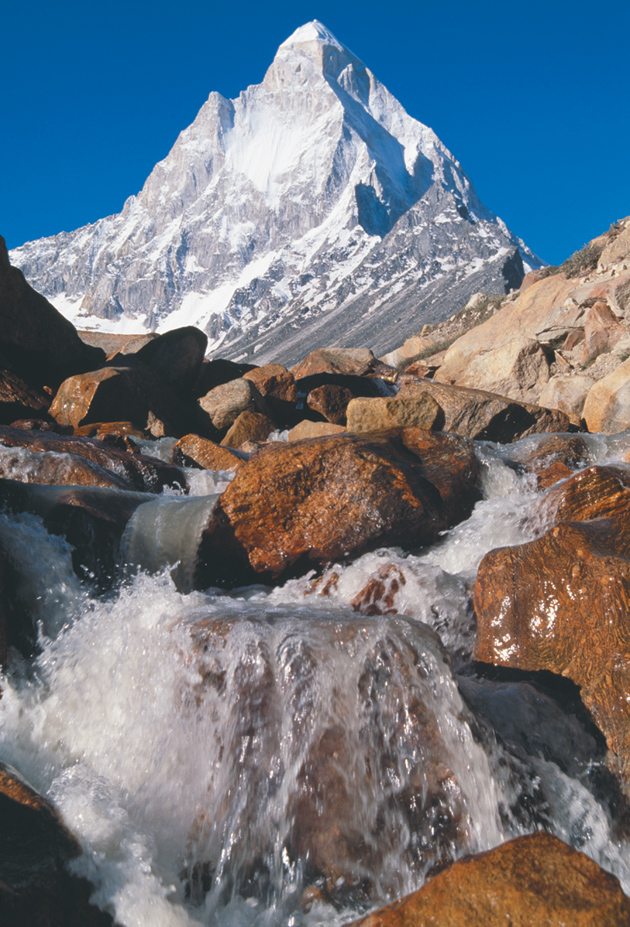In response to:
The Message from the Glaciers from the May 27, 2010 issue
To the Editors:
Orville Schell in his fine essay [“The Message from the Glaciers,” NYR, May 27] has this to say about me:
But the Indian minister of environment and forests, Jairam Ramesh, recently released a report questioning whether glaciers in the region are actually melting in a precipitous manner….
Mr. Schell is right. The report I released last November, Himalayan Glaciers: A State-of-Art Review of Glacial Studies, Glacial Retreat and Climate Change, does not present as alarmist a position as the IPCC and other climate evangelists like Mr. Al Gore have taken. Of course, the IPCC later retracted its “prediction” of the Himalayan glaciers melting away by 2035, which this report had challenged.
But Mr. Schell seems to suggest that I am less than serious on this issue. I am not. I want to reiterate what I have been saying for the past year in both India and abroad:
- The bulk of the 10,000-odd glaciers in the Indian Himalayas that have been studied appear to be in retreat.
- Some glaciers, like the Gangotri glacier, are retreating but at a decelerating rate.
- Some glaciers, like the Siachen glacier, appear to be actually advancing.
The Himalayan glaciers are different from other glaciers (like in the Arctic) mainly because of their snout being at least three thousand meters above sea level. This may influence their behavior.
Many eminent Indian scientists have challenged the evidence of the impact of black carbon on glacier retreat. This requires further study with an open mind. But black carbon cannot hijack the ongoing debate on GHGs.
The health of the glaciers (as evidenced by the huge presence of debris, for example) is very poor and this needs to be addressed quickly.
- The contribution of glaciers to the water in Himalayan rivers also needs to be examined closely. Recent World Bank studies seem to indicate that glacier melt contributes about 4 percent of the total flow of Nepal rivers, a figure that is much lower than what we commonly assume to be the case.
I am extremely concerned, as is the government of India, about the impact of climate change on Himalayan glaciers. A National Institute of Himalayan Glaciology has been set up in Dehra Dun to coordinate the measurement, modeling, and monitoring (the 3-M strategy) of glacial health. A network of automated weather stations is being put in place.
Last September, we brought out a fairly detailed report, Governance for Sustaining the Himalayan Ecosystem (G-SHE), which is under implementation in the states. We are also actively pursuing joint programs in glaciology with other countries in the Himalayan eco-region, both bilaterally as well under the aegis of the Kathmandu-based international organization ICIMOD.
We need more robust science and less sensationalizing and sermonizing on the Himalayan glacier issue.
Jairam Ramesh
Minister of State (Independent Charge) for Environment and Forests
Government of India
New Delhi
Orville Schell replies:
The Indian environment minister, Jairam Ramesh, admonishes us that “we need more robust science and less sensationalizing and sermonizing on the Himalayan glacier issue.” He is right. The behavior of glaciers is still incompletely understood and urgently needs more research. While some appear quite healthy, others appear to be shrinking at an alarming rate. It is also undeniable that the connection between disappearing glaciers and climate change demands as much attention as we can afford.
While we do not have definitive information about the underlying forces, there is clearly something amiss in the melting of so many major ice systems—from the Arctic and Antarctic to the various high-altitude regions around the world. Contributing to this global phenomenon are growing amounts of dust, black carbon soot, and other particulate matter in the atmosphere, along with rising temperatures and changing patterns of precipitation, strongly suggesting that human agency is a major cause.
Reluctance to be branded “an alarmist” such as “the IPCC and other climate evangelists like Mr. Al Gore” might understandably make some choose to delay judgment while more studies are done. But even Ramesh himself concedes he is “extremely concerned, as is the government of India, about the impact of climate change on Himalayan glaciers.” If this is true, then one is left to wonder whether Minister Ramesh’s call for prudence and restraint is responsible. But who among us delays taking out fire insurance, even when there is substantial uncertainty that our homes will burn down?
To insinuate that the scientists cited in my article are really only “climate evangelists” calling on gullible people to believe in environmental apocalypse is probably not what Minister Ramesh really means. At least, I hope not. After all, he is a smart and persuasive man. But so too are these scientists, who have spent their lifetimes engaged in climate research. And when so many of the world’s experts conclude that anthropogenic effects, such as greenhouse gas emissions and carbon soot, are most probably causing perturbations in our global climate, and that these changes are at the root of the problems that now seem to beset many glaciers, do we not have an obligation not only to listen, but also to formulate sensible courses of action?
This Issue
July 15, 2010
What Obama Should Have Said to BP




